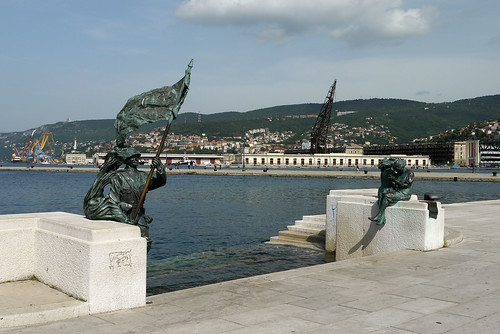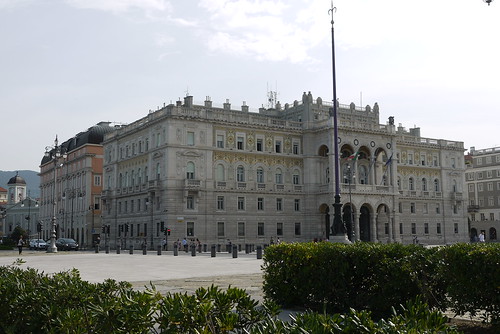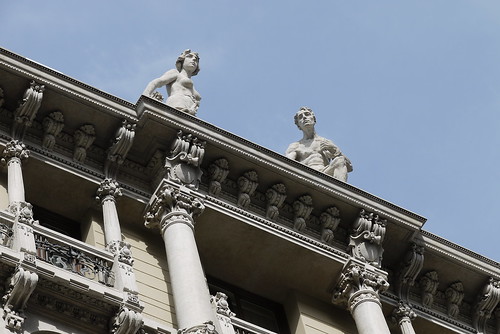Trieste is a city and seaport in northeastern Italy. It is situated towards the end of a narrow strip of Italian territory lying between the Adriatic Sea and Slovenia, which lies almost immediately south and east of the city. Trieste is located at the head of the Gulf of Trieste and throughout history it has been influenced by its location at the crossroads of Latin, Slavic, and Germaniccultures. In 2009, it had a population of about 205,000[1] and it is the capital of the autonomous region Friuli-Venezia Giulia and the Province of Trieste.
Trieste was one of the oldest parts of the Habsburg Monarchy. In the 19th century, it was the most important port of one of the Great Powers of Europe. As a prosperous seaport in the Mediterranean region, Trieste became the fourth largest city of the Austro-Hungarian Empire (after Vienna, Budapest, and Prague). In the fin-de-siecle period, it emerged as an important hub for literature and music. It underwent an economic revival during the 1930s, and Trieste was an important spot in the struggle between the Eastern and Western blocs after the Second World War. Today, the city is in one of the richest regions of Italy, and has been a great centre for shipping, through its port (Port of Trieste), shipbuilding and financial services.
12 Comments CherryPie on Dec 28th 2015












It looks gorgeous! I bet the food there is lovely too.
We didn’t have time to sample the food but when we ordered a drink it came with a good selection of nibbles to satisfy our appetite.
I would like to visit Trieste one day too.
We only had a morning there which wasn’t long enough to explore properly.
I was fortunate to visit Trieste in the early eighties whilst visiting the vineyards in Friuli in the Veneto.
The canal region is spectacular and the whole place has a style of mixed Hapsburg and Venetian .
It also has a reputation for being a centre of spying during the last war being in such a crossroads of nations, very much still a place not on visiting lists, but it should be.
We didn’t get chance to explore the canal region. Our tour guide told us about the spying and how the square was lined by cafes each exclusive to a particular nation so that they couldn’t be overheard by each other.
A spot I had not seen profiled by other travelers….lovely!
I would like to go back to explore further, although it is not a place I would actually like to stay for more than a night.
An exalted environment – not at all what one might expect from its name – the word “Trieste” reminds me of the Spanish word “Triste,” which means “sad” (possibly in Italian as well). However, I see no “sad” here, only breathtaking beauty
The palatial-looking building, what was it historically and what is its function now?
I see some cross-cultural influence in architecture on that one, if I’m not mistaken.
In this instance it doesn’t derive from the Spanish word. This is what Wiki has to say about it:
“The original pre-Roman name of the city, Tergeste, with the -est- suffix typical of Illyrian, is speculated to be derived from a hypothetical Venetic word *terg- “market”, etymologically related to Old Church Slavonic tьrgъ “market” (whence Slovenian and Serbian трг / трг / тржница and the Scandinavian borrowing torg).[4][5][6] Roman authors also transliterated the name as Tergestum. Modern names of the city include: Italian: Trieste, Slovene: Trst, German: Triest, Hungarian: Trieszt, Croatian: Trst, Serbian: Трст, Trst, and Greek: Τεργέστη, Tergesti.”
The building is Governement Palace it houses the offices of the Friuli Venezia Giulia Region and the Prefecture.
Some lovely architecture. It would be nice to spend some time there.
We didn’t have enough time on our visit which meant we left a lot of thing unexplored.